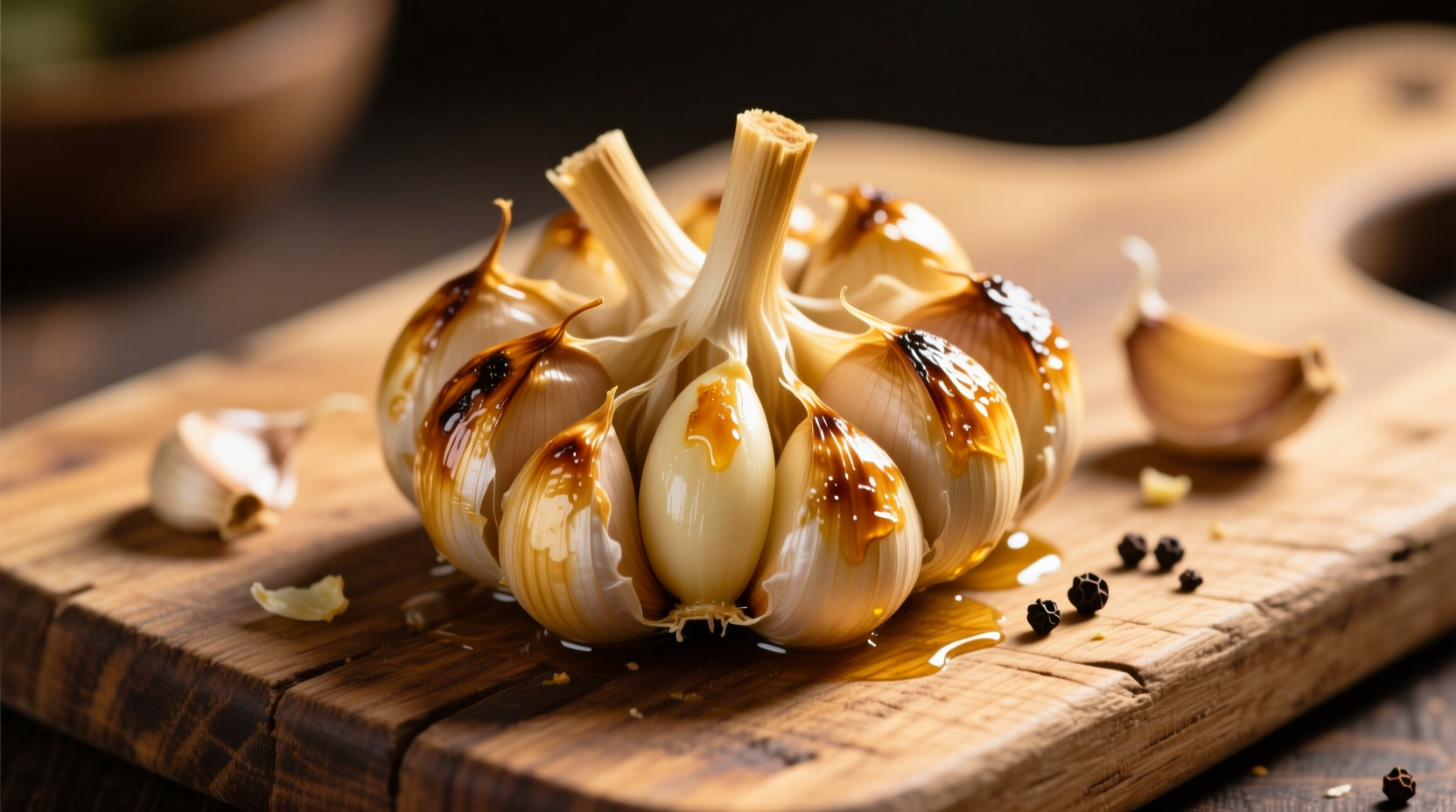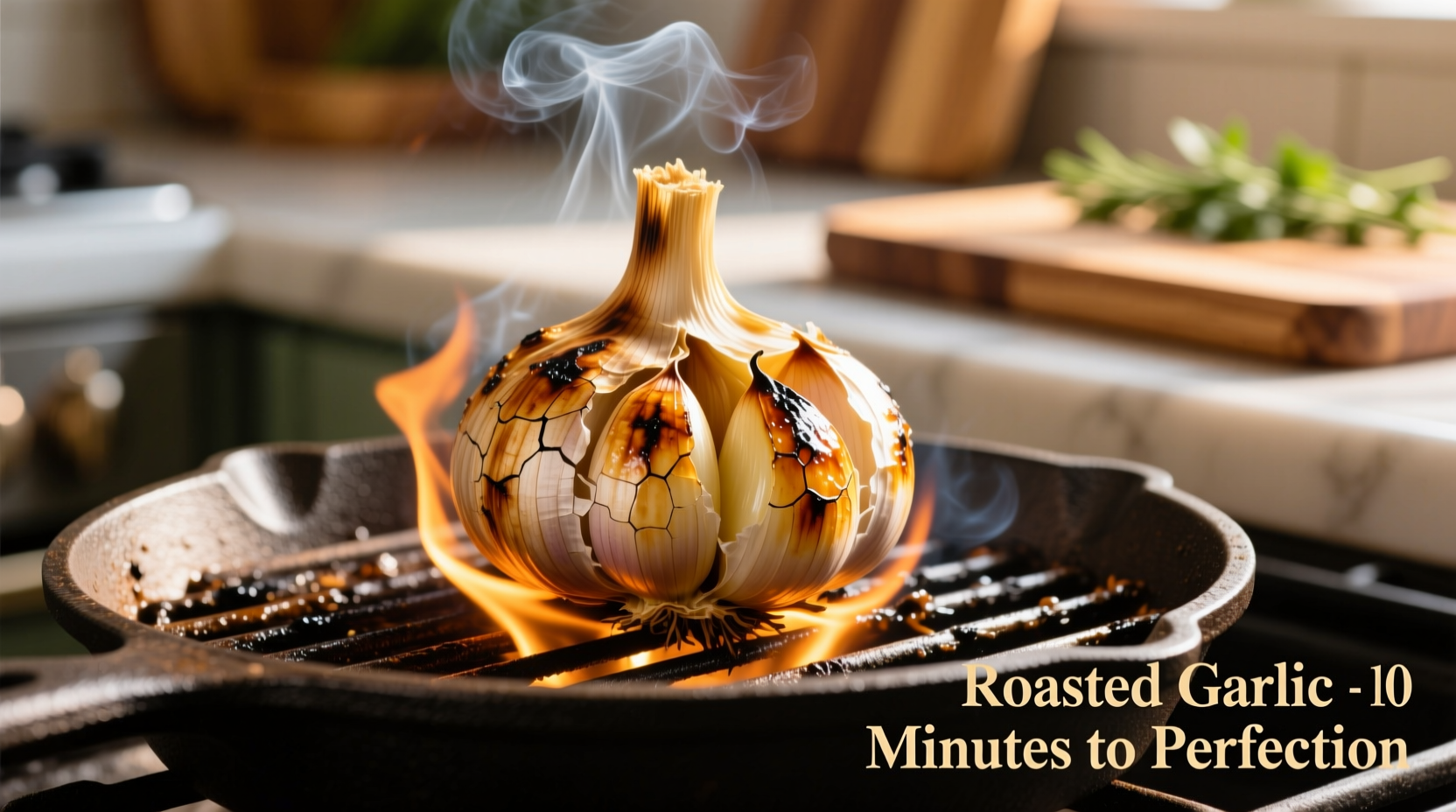The Magic Transformation: Why Roast Whole Garlic?
When you roast an entire head of garlic, you trigger a remarkable chemical transformation. Raw garlic contains allicin, the compound responsible for its sharp bite and pungent aroma. As garlic heats, allicin breaks down while natural sugars caramelize, creating a complex flavor profile that's sweet, nutty, and deeply savory without the harshness of raw garlic.
According to research from the Oregon State University Extension Service, roasting preserves many of garlic's beneficial compounds while making them more bioavailable. The process also converts firm, difficult-to-peel cloves into a soft, spreadable texture that integrates seamlessly into sauces, dressings, and spreads.
| Property | Raw Garlic | Roasted Garlic |
|---|---|---|
| Flavor Profile | Sharp, pungent, spicy | Sweet, mellow, nutty |
| Texture | Firm, crunchy | Soft, spreadable |
| Digestibility | Can cause digestive upset | Gentler on digestion |
| Best Culinary Uses | Raw applications, quick sautés | Spreads, sauces, dressings, roasts |
Your Minimalist Roasting Toolkit
One of the beauties of roasting garlic is its simplicity. You need just four basic components:
- Fresh garlic heads: Look for firm bulbs with tight, papery skin. Avoid any with soft spots or green sprouts.
- Good quality olive oil: Extra virgin works well, but any cooking oil with a high smoke point (like avocado oil) will suffice.
- Fine sea salt: Enhances flavor development during roasting.
- Aluminum foil or ceramic dish: For containing the garlic during roasting.
Professional chefs at the Culinary Institute of America recommend using garlic from cooler climate regions for roasting, as these varieties tend to have more complex flavor profiles that develop beautifully with heat.
Step-by-Step Roasting Process
Follow this precise method for consistently perfect results:
- Prep the garlic: Remove any loose outer papery layers, but leave the head intact. Using a sharp knife, slice ¼ inch off the top to expose the cloves.
- Oil application: Drizzle 1-2 teaspoons of olive oil over the exposed cloves, letting it seep between them. Sprinkle with salt.
- Wrap securely: Either wrap the head tightly in foil or place it in a small oven-safe dish with a lid.
- Roast: Place in a preheated 400°F (205°C) oven for 35-45 minutes until cloves are golden brown and tender when pierced.
- Cool and extract: Let cool for 10 minutes, then squeeze from the base to release the soft cloves.

Avoid These Common Roasting Mistakes
Even this simple technique has pitfalls that can compromise your results:
- Under-roasting: Cloves remain firm and lack flavor transformation. Solution: Extend time by 5-10 minutes.
- Over-roasting: Creates bitter, burnt flavors. Solution: Reduce temperature to 375°F (190°C) for more delicate results.
- Insufficient oil: Leads to dry, tough cloves. Solution: Ensure oil penetrates between cloves during prep.
- Wrong temperature: Too low won't caramelize properly; too high burns before softening. Solution: Stick to 375-400°F range.
Maximizing Your Roasted Garlic: Practical Applications
Don't limit yourself to just spreading roasted garlic on bread. Professional chefs use it to enhance dishes in these creative ways:
- Mix into mashed potatoes or cauliflower puree for incredible depth
- Blend with olive oil for an instant pasta sauce
- Add to salad dressings for complex umami notes
- Stir into soups and stews during the last 10 minutes of cooking
- Combine with softened butter for compound butter
- Spread on pizza before adding other toppings
According to a USDA Agricultural Research Service study, roasted garlic's flavor compounds integrate more completely into dishes than raw garlic, creating more balanced and complex flavor profiles throughout your cooking.
Storage Guidelines for Maximum Freshness
Proper storage extends the life of your roasted garlic:
- Refrigeration: Store in an airtight container for up to 1 week
- Freezing: Place cloves in ice cube trays with olive oil, then transfer to freezer bags for up to 3 months
- Oil preservation: Submerge in olive oil in a sealed jar for up to 4 days in the refrigerator (never at room temperature due to botulism risk)
Food safety experts at the National Center for Home Food Preservation warn that garlic-in-oil mixtures must be refrigerated and consumed within 4 days to prevent potential botulism risk. Never store garlic in oil at room temperature.
Troubleshooting Your Roasted Garlic
Encountering issues? Here's how to fix them:
- Garlic too firm: Return to oven for 5-10 minute increments until tender
- Garlic burnt on top: Next time, reduce oven temperature by 25°F and cover with additional foil
- Lack of flavor transformation: Ensure you're using enough oil and proper temperature
- Excess moisture: Pat cloves dry with paper towel before using in recipes
Frequently Asked Questions
Can I roast multiple heads at once?
Absolutely. When roasting multiple heads, maintain space between them for even heat distribution. You may need to increase roasting time by 5-10 minutes for larger batches. Professional kitchens often roast dozens at a time for consistent flavor in sauces and spreads.
Does roasting reduce garlic's health benefits?
Rather than reducing benefits, roasting transforms them. While raw garlic contains more allicin, roasted garlic develops different beneficial compounds through the Maillard reaction. Research from the Journal of Agricultural and Food Chemistry shows roasted garlic maintains significant antioxidant properties while becoming more digestible.
Can I use roasted garlic in place of raw in recipes?
Yes, but with flavor adjustments. Roasted garlic provides milder, sweeter flavor, so you'll typically need 1.5-2 times the amount of roasted versus raw garlic to achieve similar intensity. It works particularly well in dishes where raw garlic would be overpowering.
Why does my roasted garlic taste bitter?
Bitterness usually indicates over-roasting or burning. Next time, reduce oven temperature by 25°F and check for doneness starting at 30 minutes. The ideal roasted garlic should be golden brown, not dark brown or black at the edges.
Can I roast garlic without oil?
While possible, oil is crucial for proper texture development and flavor transfer. Without oil, garlic tends to dry out and burn rather than caramelize. For lower fat versions, use just 1 teaspoon per head rather than eliminating oil entirely.











 浙公网安备
33010002000092号
浙公网安备
33010002000092号 浙B2-20120091-4
浙B2-20120091-4